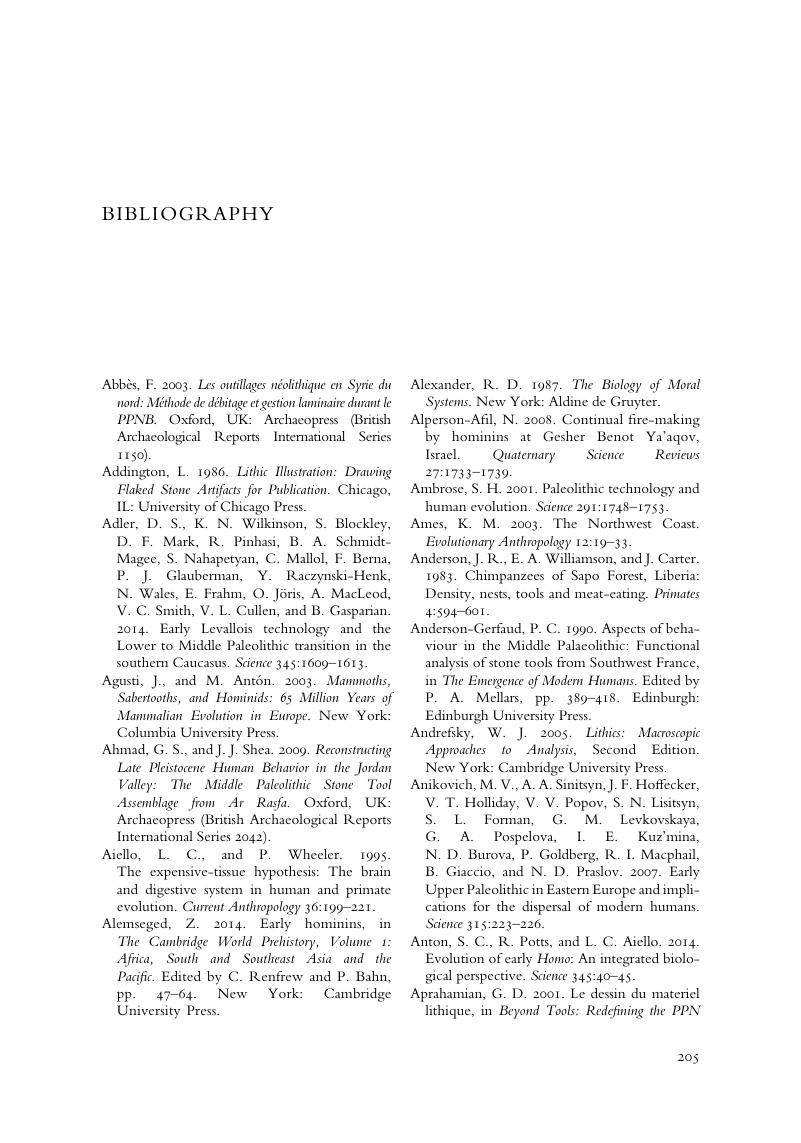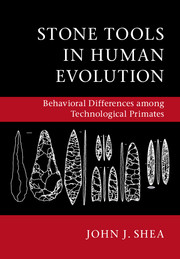Book contents
- Stone Tools in Human Evolution: Behavioral Differences among Technological Primates
- Stone Tools in Human Evolution
- Copyright page
- Dedication
- Contents
- Figures
- Tables
- Boxes
- Preface
- Acknowledgments
- Chapter 1 Introduction
- Chapter 2 How We Know What We Think We Know about Stone Tools
- Chapter 3 Describing Stone Tools
- Chapter 4 Stone Cutting Tools
- Chapter 5 Logistical Mobility
- Chapter 6 Language and Symbolic Artifacts
- Chapter 7 Dispersal and Diaspora
- Chapter 8 Residential Sedentism
- Chapter 9 Conclusion
- Appendix Traditional Archaeological Age-stages and Industries
- Glossary
- Bibliography
- Index
- References
Bibliography
Published online by Cambridge University Press: 27 October 2016
- Stone Tools in Human Evolution: Behavioral Differences among Technological Primates
- Stone Tools in Human Evolution
- Copyright page
- Dedication
- Contents
- Figures
- Tables
- Boxes
- Preface
- Acknowledgments
- Chapter 1 Introduction
- Chapter 2 How We Know What We Think We Know about Stone Tools
- Chapter 3 Describing Stone Tools
- Chapter 4 Stone Cutting Tools
- Chapter 5 Logistical Mobility
- Chapter 6 Language and Symbolic Artifacts
- Chapter 7 Dispersal and Diaspora
- Chapter 8 Residential Sedentism
- Chapter 9 Conclusion
- Appendix Traditional Archaeological Age-stages and Industries
- Glossary
- Bibliography
- Index
- References
Summary

- Type
- Chapter
- Information
- Stone Tools in Human EvolutionBehavioral Differences among Technological Primates, pp. 205 - 231Publisher: Cambridge University PressPrint publication year: 2016



